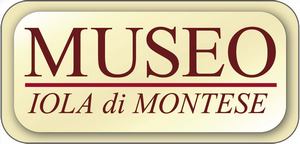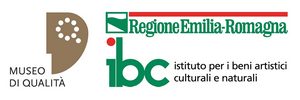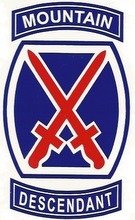From the book "In my father's foxholes and footsteps"
- From the book "In my father's foxholes and footsteps"
- The arrival in Italy and the transfer to the Apennines
- The attack on Mt Belvedere
- The defence of Mt Belvedere
- Il Malandrone, Cimon della Piella and Pietracolora
- The conquest of Castel d'Aiano and Mt della Spe
- The Spring Offensive
- Tolè towards Monte Pastore
- The conquest and crossing Savigno
- Fly down into the Po Valley
- Crossing the Po river
- The end of the war in Italy
- Return back to America and to the family
- All Pages
We docked at the port of Naples where a train was already waiting for us: we got off the ship and we marched directly onto the four-wheeled boxcars and that same night proceeded north. The journey lasted about two days. I remember wondering how we would defend ourselves against the German planes that would be strafing us; however, we had pretty good control of the air being that there were few German airplanes left. I don’t remember exactly how many of us were in a boxcar because I was attracted to the landscape. I saw land devastated by the bombings, especially to the surrounding railroad and yard. The south was battle stage prior to our arrival. We made a stop in Rome for only an hour and then kept going. I saved the picture, taken at the train station in Rome. I don’t remember if it was a photo taken in that month but nevertheless it is a photo of Rome.
 One thing still remains vivid in my mind that at every stop made, we would find ourselves encircled by many children coming up to us asking for food or whatever else we could give them. We all felt for them and gave whatever we could. It was mostly food to ease the hunger that those children must have felt from lack of it at home. We felt sorry for them and each one of us gave what we could although we didn’t have much really to give.
One thing still remains vivid in my mind that at every stop made, we would find ourselves encircled by many children coming up to us asking for food or whatever else we could give them. We all felt for them and gave whatever we could. It was mostly food to ease the hunger that those children must have felt from lack of it at home. We felt sorry for them and each one of us gave what we could although we didn’t have much really to give.
We arrived in the city of Livorno where we got off the trains and were taken by truck to a waiting area near Pisa. We were told that it was known as the antique hunting grounds of the King. It was January and the land was covered with snow. We pitched our tents there and slept. We stayed there a few days training and marching. Around the middle of January we were transferred to the “Quiet Sector” near Villa Colli and thereafter to San Marcello near Pistoia were waiting to be transferred to the frontlines for the Belvedere offensive.
Val: “Were you able to speak with any of the inhabitants?”
No, no way. We didn’t have a chance, we only marched and we were given orders not to reveal who we were. We didn’t know how, but the Germans already knew.
Val: “What type of transportation was used?”
Army trucks. It’s onlylater at night where we would go by foot along the frontline so as not to been seen by German watchmen. Daytime was too risky to do so.
We reached the frontline of Mt. Belvedere by the end of January during which the first few weeks were really uneventful. Some of those days were just patrols. We were inspecting the lines and the Germans would be doing the same. Every so often shooting would break out. Patrols consisting of ten men would be sent out to search the Germans and study their next move. I think the patrolling served two purposes, to keep both sides on alert.
Val: “What was your role, what was your assignment in K Company?”
I have to go back to when I first entered K Company. Around the middle of June 1943, after completing basic training at Camp Roberts, the 87th Regiment was sent to Fort Ord where we remained for 2 weeks. At that time we didn’t know for what reasons. In the Army you don’t know where you’re going to be sent to until you get there. I remember one day they asked me “Where would you like to go. Don’t tell me with which company, but tell me if you would like to be a rifleman, an artillery man, or rather a gunner in the weapons platoon?” So I said, “Well then, I’ll think I would like to go with the artillery”. So, I ended up with the mortar group because I had used mortars in training and was already familiar with them. I also had extensive training with machine guns and but not having many other choices I ended up in K Company. So that’s how I joined K Company, 87th Regiment, which by the way, was mostly composed of volunteers and as far as I was concerned, were well educated. Most of them came from Ivy League schools. Some were from the eastern part of the country, few from the west, but most were from the eastern part of the States. At that time I asked myself, “What was I doing here” .I mean, those guys had similar backgrounds, and even when asked to this day how I ended up in the 87th Regiment I respond, they probably just needed men.
Val: “What type of personal equipment did you carry? “
Usually a backpack where you carried your food, a little bit of K food rations, as they were known as, which was enough for one meal. It contained chocolate, a bit of crackers and a some of spam. Oh how we grew so tired of spam! We also had a light blanket, a small tent, and on your belt, a small pick, a little shovel and a canteen. On top of all this we carried a rifle, or a piece of mortar or whatever equipment you were using. I usually either carried the base of the mortar or the tube itself. Sometimes, in some places, I was given a small carabin. It’s called carabin because it’s smaller than a regular infantry rifle. It’s not good for use in battles but rather for defending oneself. Normally I carried a pistol with which you probably couldn’t even kill a bird with, but I carried it with me throughout my tour in Italy. That’s what we carried in our backpacks for our overnight stays. Sometimes, I can’t remember exactly anymore, we would add some other things of minor importance. At times we even had a change of socks, extremely important especially if you perspired too much you needed to change your socks.








